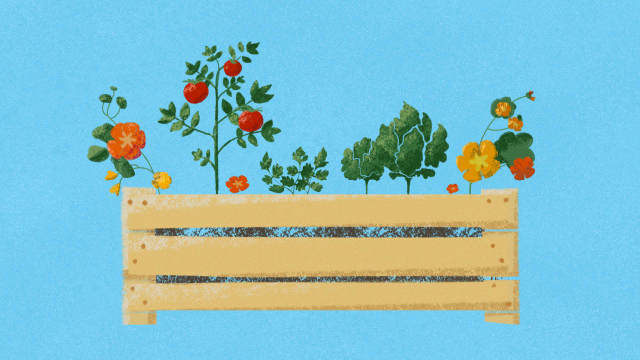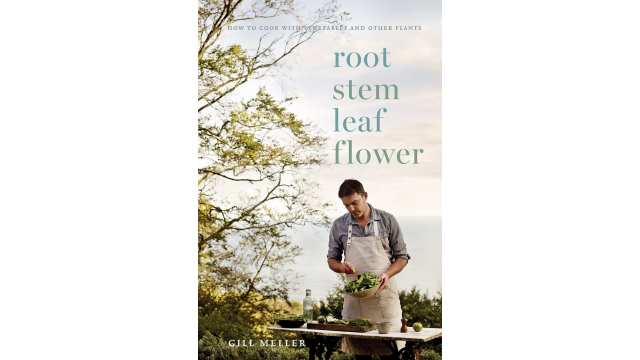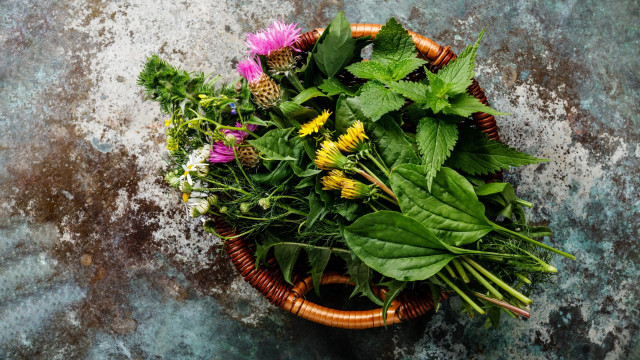Spring’s Fleeting Flowers

Ah, spring! In Kashmir, where I was born, the first day of spring is a day to rejoice, to go for picnics to Badamwari, the almond orchard, and celebrate the end of the long, cold nights of winter. The sight of an almond orchard in full bloom is the stuff of legend. My parents’ generation remembers picnics among the white blossoms with much nostalgia.
Spring in Delhi, where I live now, is quite different. It is short; if you blink, chances are you will miss it. Sometimes it is no more than two weeks of balmy days with blue skies before the sun starts to beat down and bake every living thing to a crisp. Some years we get a bit more of a breather to revel in the floral abundance called spring.
In my rooftop garden, the self-seeding mustard becomes a riot of bright yellow swaying in the wind, announcing the loosening grip of winter. Bees love these mildly pungent flowers and descend in droves for their nectar. Snipped, the flowers last but a day in the vase — but that doesn’t stop me from bringing them in by the armloads. Drunk bees return the favor by pollinating the flowers, and one by one, the flowers turn into pods plump with seed.
Peak Harvest in Spring
Spring is peak harvest time in the garden, a final opportunity to gather and use up the abundance of carrots, radishes, turnips, and all manner of greens. It’s now or never. I don’t have superpowers, so I never manage to get to them all. With days growing longer and warmer, the crops I planted in autumn, tended through winter, but couldn’t harvest until spring, start to bolt.
In a final growth spurt, all manner of plants shoot up and produce flower buds. Carrot, dill, and coriander put forth spectacular umbels of sweet smelling blossoms, as do colorful Himalayan radishes with their white-lavender flowers. Soon, these will yield to fruit with seeds ripening inside. Poppies pop up all over the garden; they come back year after year and put up a colorful show.
I watch my crops go through their full cycle of life. Flowers fade. Stripped of foliage, the ten-feet tall mustard stalks with their rattling seed-pods — the tallest architectural elements of the garden. In the middle layer, green-yellow umbels of dill emerge in swathes, and fade into wispy umbrellas of seeds. Under that are the erect globular heads of the poppy, easily one of the most sculptural seed-pods.
Garden of Edible Memories
The garden slowly transforms into something dreamily romantic, reminiscent of the carefully crafted gardens of Piet Oudolf, the famous Dutch gardener. You’d surprised at the beauty that unfolds when you don’t rush in with your pruner at the first sign of decay. In the middle of the concrete jungle, this unruly serendipitous display of colors, textures, and fragrance looks like a slice of wilderness. Though it is anything but.
For any edible plant, its flower, fruit, and seed are likely edible as well. Irrespective of what you intend to harvest, for optimum flavor the window between not-yet-ready to past-its-prime is a small one. While I may not be able to get to all vegetables in time, I’ll be damned if I am not going to make a last ditch effort to get to their flowers and seeds. Late spring finds me working hard at gathering blossoms to use fresh or dry for later. Topping a salad with mustard, radish, or nasturtium flowers adds interesting flavor accents and is guaranteed to be a conversation starter.
Occasionally, I make compound butters by mincing the flowers with a little garlic and blending them with butter and a squeeze of fresh lime. With calendula and French marigold, you can brew soothing tisanes, though I use them primarily to infuse oils that go into home-made balms and lotions. Leaves and flowers can also be used to dye fabric at home. The potential is endless.
I do not know a gardener who doesn’t save seeds for next season. If you harvest enough, you might even be able to fill some of your spice jars. Mustard is prolific in my garden. I cook its greens on a weekly basis all through winter, even freezing some for good measure. Eventually, I can’t keep up with its prolificity and ignore it. It continues to grows unfettered, its beautiful blooms on tall stalks dwarfing all else. The yield this year was an impressive kilo of seeds, enough and more to last until next season. I also gather dill and celery seeds, a couple of jarfuls of each, to use in pickles year-round.
Roses in the Garden and Kitchen
The one flower we are all sure to grow is the Indian desi gulab. Hardier than hybrid tea roses, gulab or musk rose (Rosa moschata) is a very fragrant rose variety and closely related to the Damascus rose (Rosa damascena) that originated in Persia. It produces small flowers, 2 to 3 inches across, with red or pink petals. All it asks for is a hard prune in early October with a good helping of manure or kitchen compost. Plant it in a sunny spot and you can harvest beautiful fragrant red blooms by the basket-loads through spring.
The petals retain their delicate fragrance long after drying, which makes them an ideal ingredient in potpourris. To dry, just spread the petals on a cotton towel or bamboo tray and dry in the shade. Store in an airtight container and use as you wish.
My mother maintains a few bushes in her sunny garden and I put the blooms to good use in my kitchen. For a special treat, make a two-ingredient gulkand. Simply pluck roses in the morning, at the barely-bloomed stage. Remove the petals and rinse in cool water. Drain. There is no need to pat them dry. Spread a layer of rose petals in a clean, dry glass jar, and sprinkle with granulated sugar, approximately 1 tablespoon per flower. Muddle using the back of a spoon and repeat until you have used up all the petals. Optionally, add a few grains of citric acid crystals and mix well. Cover and leave in the sun to cook for a week or more, making sure to stir well daily. Use it in recipes that call for rose petals or eat it by the spoonful as a memory of the fleeting spring that you can enjoy throughout the year.
Key Takeaways
- Spring garden use every part of a plant.
- Spring's harvest offers seasonal bounty.
- Spring gardens boost health and mood.





